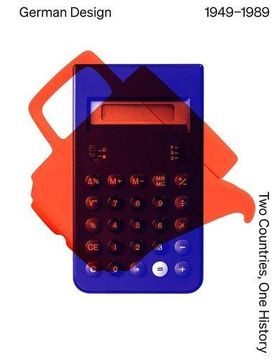Share
German Design 1949–1989: Two Countries, one History (in English)
Siegfried Gronert; Greg Castillo; Paul Betts; Petra Eisele (Author)
·
Vitra Design Museum
· Paperback
German Design 1949–1989: Two Countries, one History (in English) - Siegfried Gronert; Greg Castillo; Paul Betts; Petra Eisele
$ 79.20
$ 99.00
You save: $ 19.80
Choose the list to add your product or create one New List
✓ Product added successfully to the Wishlist.
Go to My WishlistsIt will be shipped from our warehouse between
Thursday, June 13 and
Friday, June 14.
You will receive it anywhere in United States between 1 and 3 business days after shipment.
Synopsis "German Design 1949–1989: Two Countries, one History (in English)"
The fertile dual evolution of design under socialism and capitalism in postwar GermanyThe cheap, colorful plastic designs of East Germany pitted against the cool functionalism of West German design: German Design 1949–1989: Two Countries, One History does away with such clichés. More than 30 years after German reunification, it presents a comprehensive overview of German design history of the postwar period for the first time ever. With over 300 illustrations and numerous examples from the fields of design―fashion, furniture, graphics, automobile, industrial and interiors―the book shows how design featured in daily life on both sides of the Wall, the important part it played in the reconstruction process and how it served as a propaganda tool during the Cold War. Key objects and protagonists―from Dieter Rams or Otl Aicher in the West to Rudolf Horn or Renate Müller in the East―are presented alongside formative factors such as the Bauhaus legacy and important institutions such as the Hochschule für Gestaltung (HfG) Ulm.The exceptional case of the division of Germany allows a unique comparative perspective on the role design played in promoting socialism and capitalism. While in the Federal Republic to the West, it became a generator of the export economy and the “Made in Germany” brand, in the East it was intended to fuel the socialist planned economy and affordability for broad sections of the population was key. While the book highlights the different realities of East and West, the many cross references that connected design in both are also examined. It impressively illustrates the many facets of German design history in the postwar period: from the domestic sphere to global politics, from industrial products to design’s role as a tool of protest that foreshadowed the fall of the Berlin Wall in 1989.
- 0% (0)
- 0% (0)
- 0% (0)
- 0% (0)
- 0% (0)
All books in our catalog are Original.
The book is written in English.
The binding of this edition is Paperback.
✓ Producto agregado correctamente al carro, Ir a Pagar.

